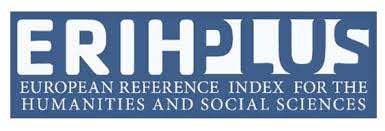The historical reconstruction of colonial art through its engraved sources: The case of PESSCA
DOI:
https://doi.org/10.17398/2660-714X.40.175Keywords:
PESSCA, Colonial Art, Engraved Sources, Historical ReconstructionAbstract
The purpose of this essay is to present the Project for the Engraved Sources of Spanish Colonial Art (PESSCA), outline the contributions this project makes to the catalogation, hermeneutics, ontology, conservation, reconstruction, and recuperation of colonial art, and to illustrate, in greater detail, the contributions this project makes to the virtual or historical reconstruction of colonial artworks which are too damaged to restore. Here we shall present the historical reconstruction of canvases from the Cathedral and of San Francisco de Quito (Ecuador) and Santa Catalina de Arequipa (Perú), of a hide painting of the Museum of International Folk Art of New Mexico (USA), and of several mural paintings of the States of Hidalgo and Oaxaca (México).
Downloads
References
DONAHUE-WALLACE, K. “The print sources of New Mexican colonial hide paintings.” Anales del Instituto de Investigaciones Estéticas, Volumen 68, 1996, pp. 43-69. DOI: https://doi.org/10.22201/iie.18703062e.1996.68.1764
ESTRADA DE GERLERO, E. I. Muros, sargas y papeles. Imagen de lo sagrado y lo profano en el arte novohispano del siglo XVI. Ciudad de México, Instituto de Investigaciones Estéticas, 2011.
MONTERRUBIO, A. L. Conventos agustinos en Hidalgo. Convento de San Agustín, Atotonilco el Grande. Convento de San Andrés, Epazoyucan. Pachuca, Dirección General de Publicaciones e Impresos del Gobierno del Estado de Hidalgo, 2012.
OJEDA, A. Project for the Engraved Sources of Spanish Colonial Art (PESSCA). Página web ubicada en https://colonialart.org y en https://artecolonial.pucp.edu.pe, 2005-2020.
OJEDA, A. “El grabado europeo como fuente del arte colonial: Estado de la cuestión.” En Michaud, Cécile et al. (Eds.) De Amberes al Cvsco. El Grabado Europeo Como Fuente del Arte Virreinal. Lima, Colección Barbosa-Stern, pp. 15-21, 2009. Disponible en línea en https://colonialart.org/essays/el-grabado-como-fuente-del-arte-colonial-estado-de-la-cuestion.
SEBASTIÁN, S. "Fuentes iconográficas del programa de Atotonilco." Arte y Arquología, Vols. 5-6, 1978, pp. 181-184.
SEBASTIÁN, S. “Libros hispalenses como clave del programa iconográfico de la escalera de Actopan (México).” Revista de Arte Sevillano Volumen 2, 1982.
SEBASTIÁN, S. Iconografía e iconología del arte novohispano. México D.F., Grupo Azabache, 1992.
VARGAS O.P., J. M. Historia de la cultura ecuatoriana. Quito, Casa de la Cultura Ecuatoriana, 1965.













